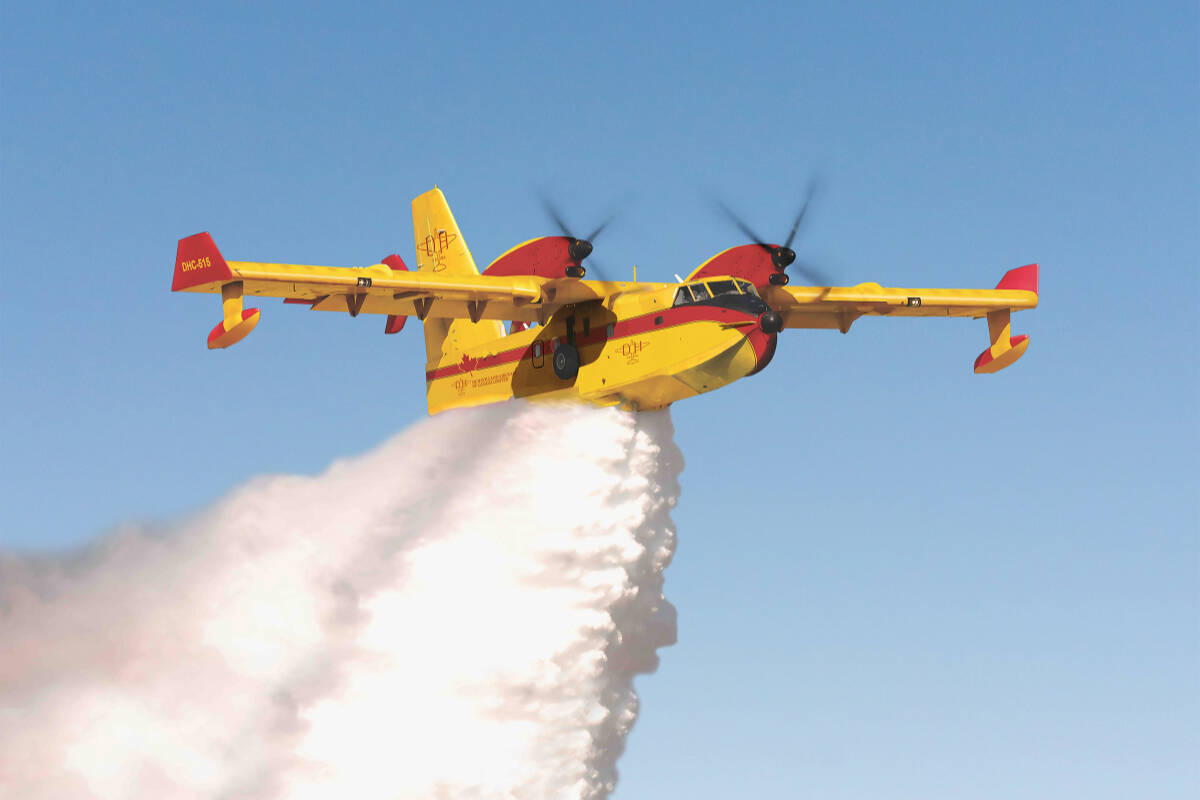While finalizing contracts with Europe for two dozen new firefighting planes, De Havilland Canada has amped up local production.
Over the last six months or so, the company bolstered up to 300 employees at its North Saanich site (formerly Viking Air), where parts are made in anticipation of assembly in Calgary, according to Neil Sweeney, vice-president of corporate affairs.
“Knock on wood, heavily, our HR people have been very good at recruiting. We’ve done recruiting fairs and been pleasantly surprised by the people who want to get into aerospace,” he said. “That doesn’t mean there aren’t holes to fill.”
The Canadair CL-215 and CL-415 aircraft have been a critical part of European and North American aerial firefighting fleets for more than 50 years.
READ ALSO: Experts worry about Canadian water bomber expertise with rising demand, aging fleets
In 2016, Viking (now De Havilland) bought the Canadair program – which has been around since the mid-1960s – from Bombardier.
“They really are the backbone of the firefighting fleet both in Canada and Europe,” Sweeney said, noting from 1970 through 2016, 225 were built and sold. “We’ve been keeping the current air fleet flying since then.”
The North Saanich site continued to make the parts to keep the water bombers flying with options to build remaining if the market rebounded. The company launched its De Havilland DHC-515 Firefighter program in 2022.
France, Italy, Greece, Spain, Portugal and Croatia have agreed to 24 aircraft total to date, with contracts in the final phases.
Assuming contracts are in place, the first delivery is expected in mid to late 2027, Sweeney said.
“We think there’s a lot of opportunity to refresh the fleet, but also there’s a lot of other countries that will want to purchase them given climate change,” Sweeney said.
READ ALSO: Peninsula’s Vancouver Island Helicopters crews battle blazes in 3 provinces
While about half the market for the water bombers is in Europe, North America – including six Canadian provinces – makes up the rest of the clientele. Many have the CL215 – the first generation of the aircraft – in their fleet which makes them about 35 to 50 years old.
In Canada’s most destructive wildfire season on record, according to Natural Resources Canada, by September last year more than 6,132 fires had torched 16.5 million hectares of land – an area larger than Greece.
“We saw a very bad fire season across our country last year, nobody had nearly enough infrastructure it didn’t matter where you were,” Sweeney said.
“We like our planes to be at the ready but not overused, because that means there’s something very bad happening to communities or the natural environment.”
READ ALSO: B.C. residents asked to prepare for a ‘challenging’ wildfire season

